
IC1805 The Heart Nebula a photo on Flickriver
IC 1805 - The Heart Nebula. (click to image for full resolution via Astrobin.com). Table of Contents Show (Click on lines to navigate) About the Target IC 1805 is also known as SH2-190 and, more commonly, the Heart Nebula. It is located 7500 light-years away in the constellation of Cassiopeia.

Part Of The Ic1805 Heart Nebula Photograph by Filipe Alves Fine Art
IC 1805 is a huge nebula located 7,500 light-years away in the constellation Cassiopeia. It is full of Hydrogen Alpha and overall pretty faint at a magnitude of 18.3. Because of its size, the Heart Nebula is best photographed using a small telescope (480mm or smaller) so that you can fit the entire object in your frame.

IC1805 (Heart Nebula) mosaic (2x2) in Hubble Palette (SII/Hα/OIII
The IC1805 emission nebula is also cataloged as Sharpless Sh2-190 and known as Heart Nebula or Running Dog Nebula. This part of the sky is quite dense with the interstellar matter, so there is quite a lot of other nebulae around. A bright cloud in the upper right part of the frame is known as Fish Head Nebula (IC1795 and NGC896).

Heart Nebula IC1805 — TheAstroGazer
The Heart Nebula (IC 1805) is a large emission nebula in the constellation Cassiopeia. The beauty of this iconic astrophotography target is due to its mix of both bright pink hydrogen gas, and dark dust clouds. This glowing nebula gets its nickname from the familiar shape it resembles and is located approximately 7,500 light-years from Earth.

IC1805 Heart Nebula
IC 1805: The Heart Nebula Credit & Copyright: Daniel Marquardt Explanation: Sprawling across almost 200 light-years, emission nebula IC 1805 is a mix of glowing interstellar gas and dark dust clouds. Derived from its Valentine's-Day-approved shape, its nickname is the Heart Nebula.

IC1805, The Heart Nebula
First, the large emission nebula dubbed IC 1805 looks, in whole, like a human heart. The nebula glows brightly in red light emitted by its most prominent element: hydrogen. The red glow and the larger shape are all powered by a small group of stars near the nebula's center.
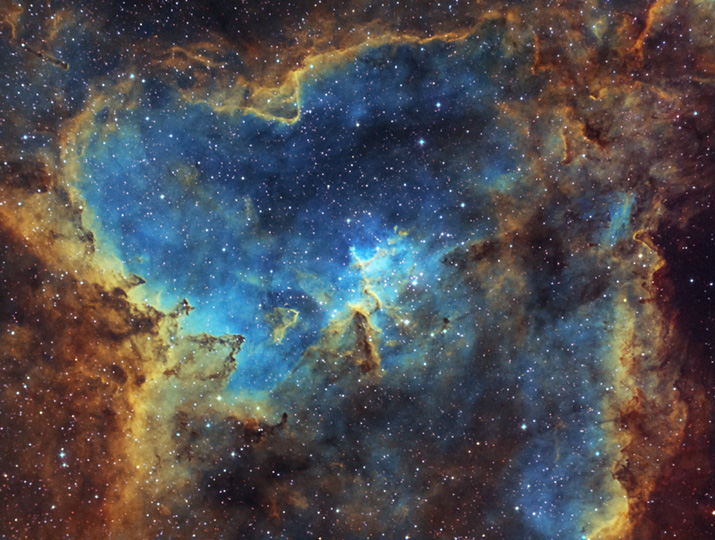
IC1805 The Heart Nebula
According to this writeup, these emission nebula are 7500 light years distant, IC1805, The Heart Nebula, is the large emission nebula in the center of the frame and IC1795 is the bright projection with the crossing dust lane near the top. The bright cluster near the center of IC1805 formed about 4 million years ago and caused its expansion into.
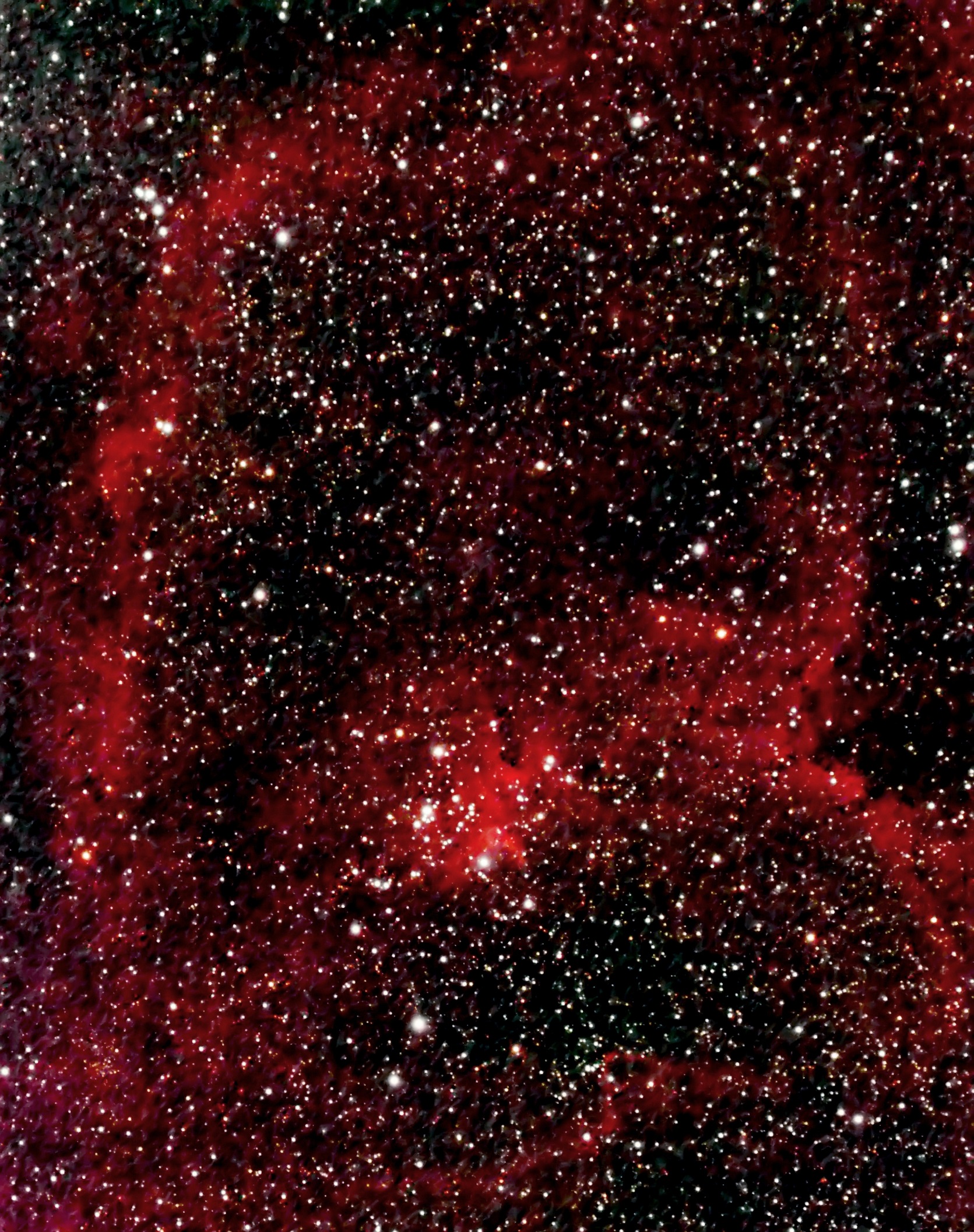
IC1805 Heart Nebula 22 Oct 2018
The Heart Nebula (IC 1805) is an emission nebula located at an approximate distance of 7,500 light years from Earth, in the constellation Cassiopeia. It is also known as Sharpless 2-190 (Sh2-190) or the Running Dog Nebula because, when seen through a telescope, it looks a bit like a running dog.
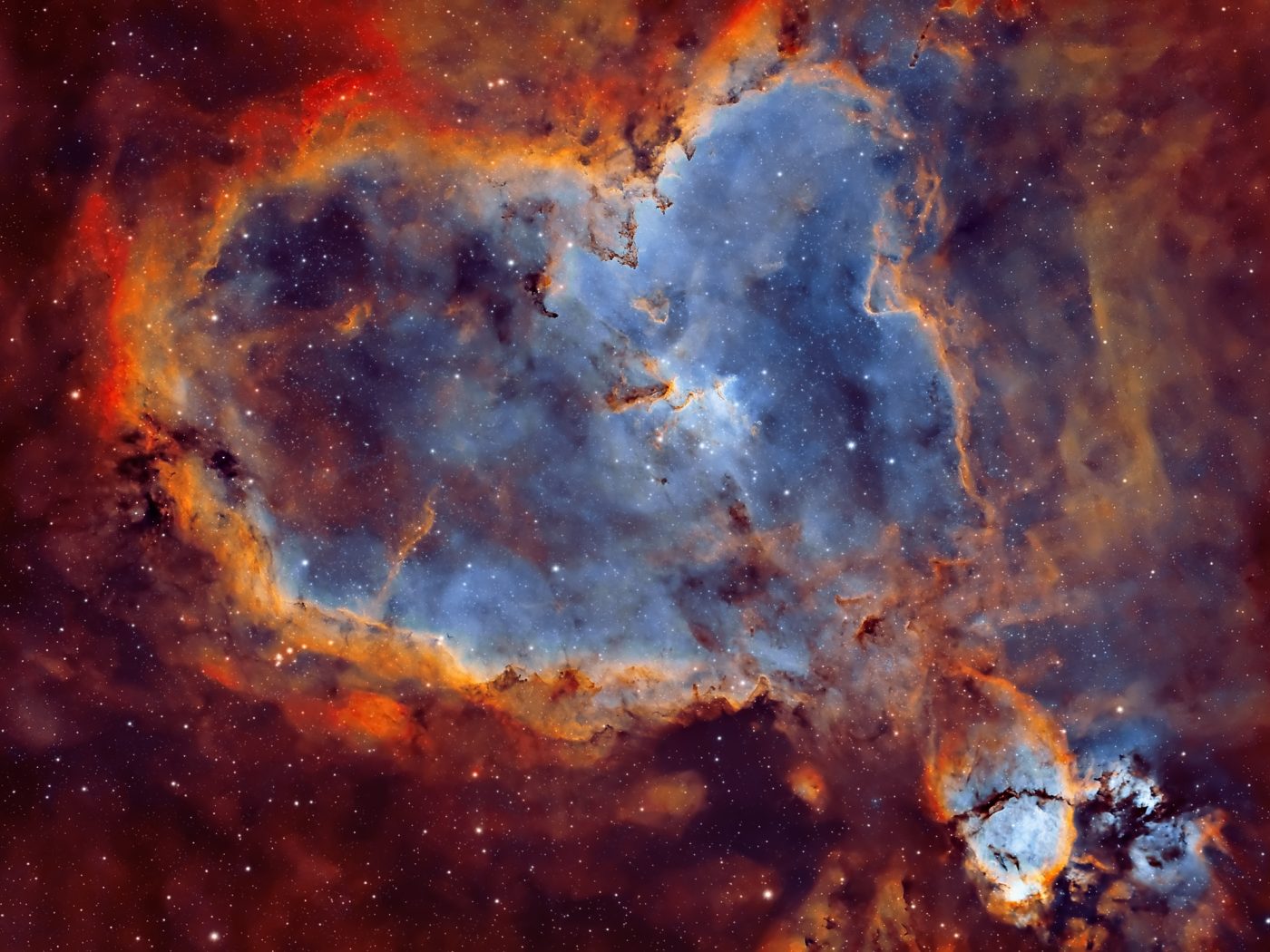
IC 1805 Heart Nebula astrophotomannheim
The Heart Nebula, IC 1805, Sharpless 2-190, lies some 7500 light years away from Earth and is located in the Perseus Arm of the Galaxy in the constellation Cassiopeia. This is an emission nebula showing glowing ionized hydrogen gas and darker dust lanes.

IC1805 Heart Nebula, LeNhance ( Tom Hitchen ) AstroBin
2013 March 4 IC 1805: The Heart Nebula Image Credit & Copyright: Terry Hancock Explanation: Sprawling across almost 200 light-years, emission nebula IC 1805 is a mix of glowing interstellar gas and dark dust clouds. Derived from its Valentine's-Day-approved shape, its nickname is the Heart Nebula.
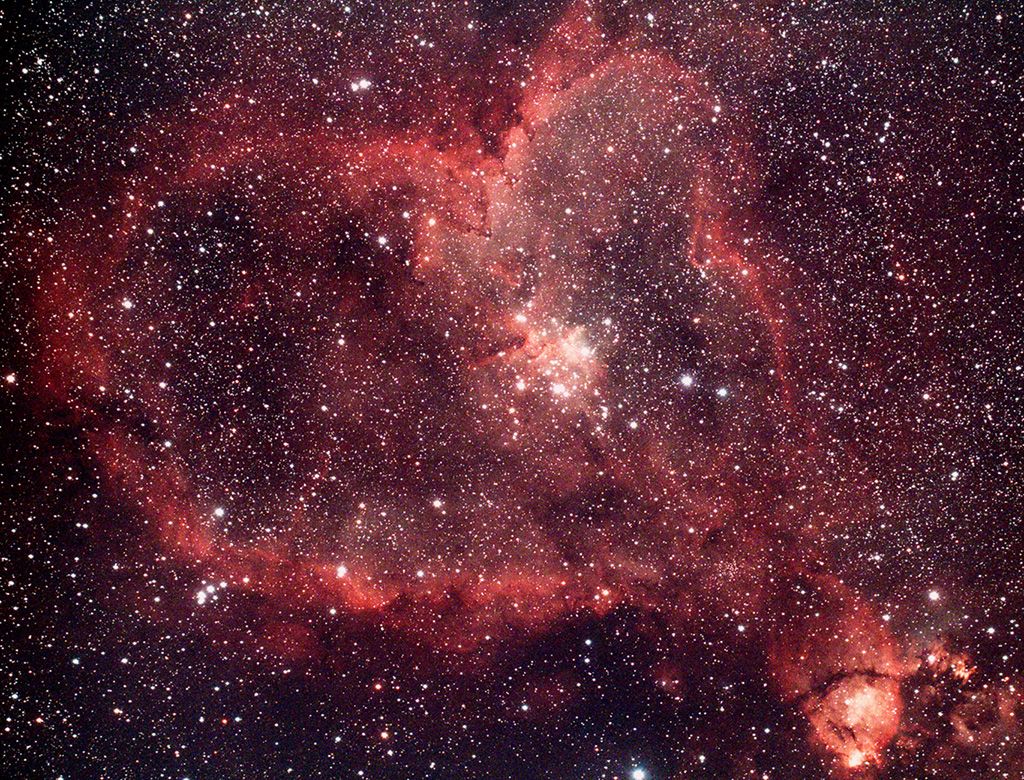
Heart Nebula (IC1805) Astronomy Pictures at Orion Telescopes
IC1805: The Heart Nebula | Deep Sky Workflows: Astrophotography, Space, and Astronomy Explore: | Annotated (scaled) | Annotated (fullsize) | Share this image The star cluster Melotte 15 contains bright young stars that energize hydrogen, causing it to emit the red light that illuminates this heart-shaped nebula.
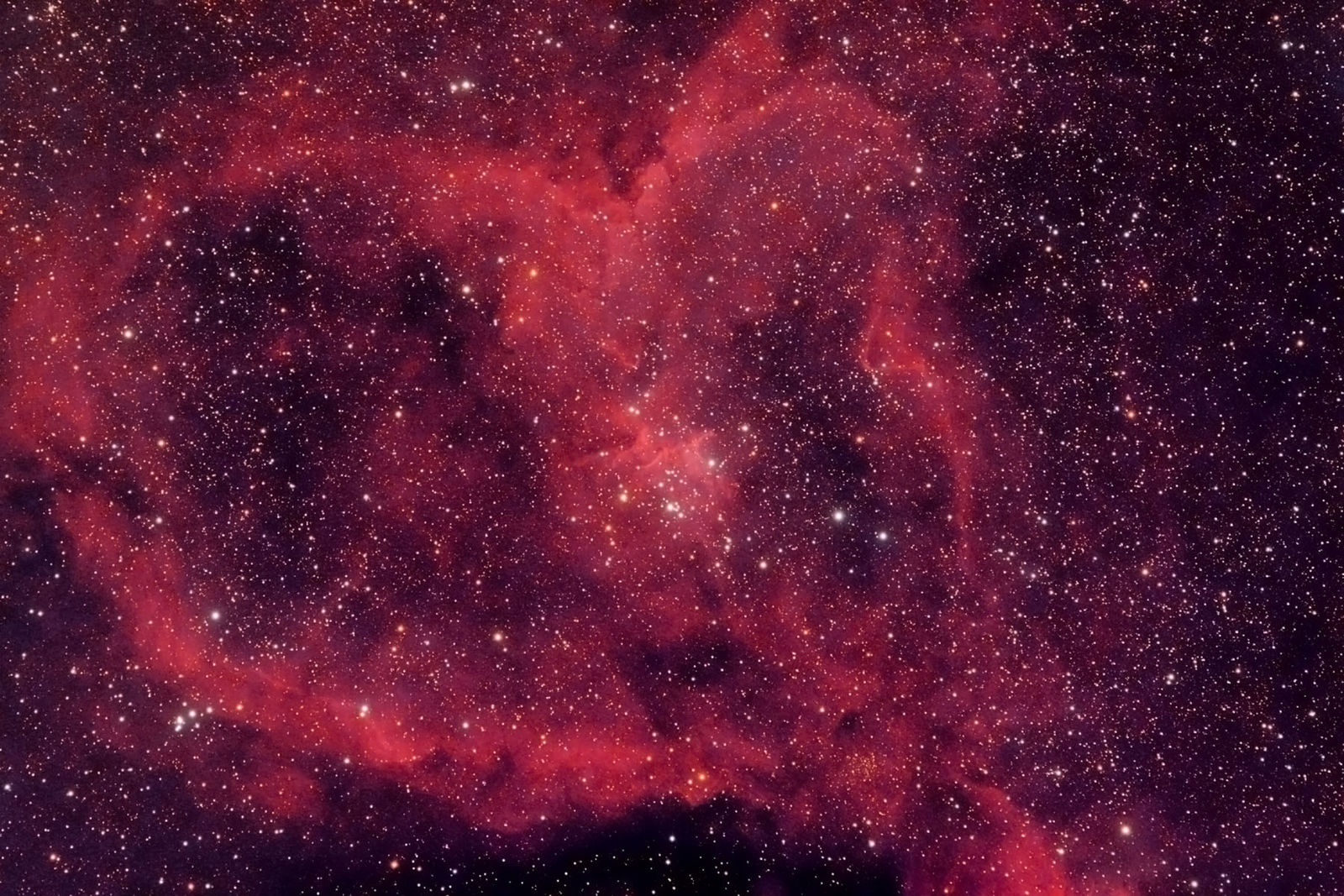
IC1805 Heart Nebula Mark Eby's AstroImages Photo Gallery Cloudy
Melotte 15 - Heart of the Heart Nebula IC1805 is a large emission nebulae in Cassiopeia that I captured here with narrowband filters, a monochrome camera, and a telescope with a focal length of 464mm. It was all shot from my light polluted backyard in Somerville, MA. Mapped color in the Hubble Palette (SHO->RGB).

IC1805 Heart nebula central IC1805 is the open star cluste… Flickr
Nebula IC1805 is a large emission nebula, located in the constellation Cassiopeia, about 7,500 lightyears from Earth. The nebula Is very rich of glowing ionised Hydrogen and darker dust lanes. The outer rims of the nebula have a very characteristic shape, giving it's nickname Heart Nebula.

IC1805 Heart Nebula in HOO The Heart Nebula, IC 1805, Sh… Flickr
From Virginia Beach , the Heart Nebula is visible all night. It will become visible at around 17:55 (EST), 41° above your north-eastern horizon, as dusk fades to darkness. It will be lost to dawn twilight at around 05:41, 24° above your north-western horizon. Name The Heart Nebula (IC1805) Object type Open cluster. Other names. The Heart Nebula.
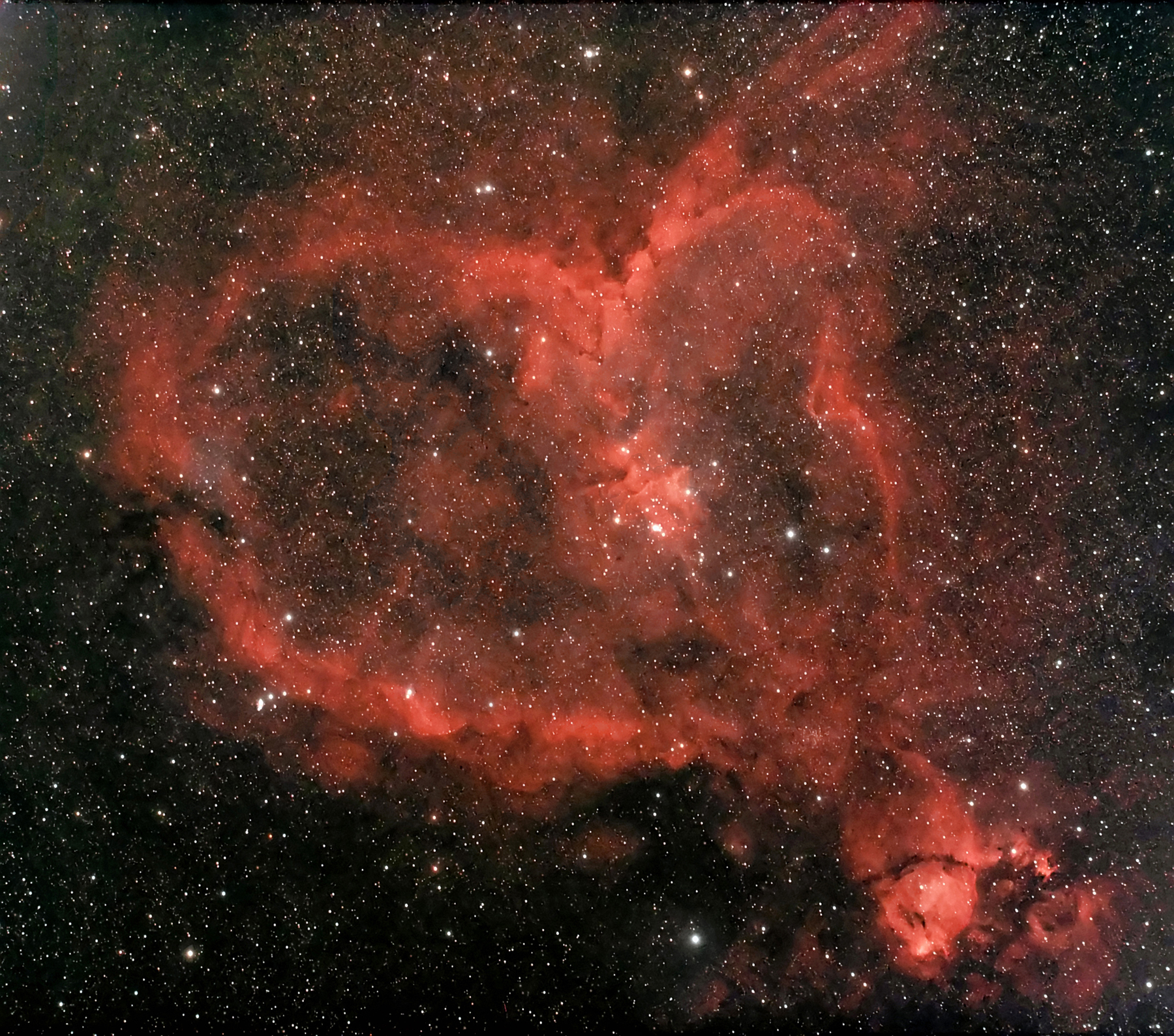
The Heart Nebula (IC 1805) Astronomy Magazine Interactive Star
15 Avg. Moon age: 12.34 days Avg. Moon phase: 71.68% RA center: 02h 32m 17s .33 DEC center: +61° 26′ 04″ .8 Pixel scale: 1.043 arcsec/pixel

IC1805 Heart Nebula Astrophotography by HrAstro
The Heart Nebula is a large complex cloud of glowing gas in Cassiopeia. It is catalogued as IC1805 and Sh2-190. The so-called Fishhead Nebula (IC1795 or NGC896) is at lower right. The Heart Nebula lies near the Soul Nebula (IC1848). Both are located about 7,500 light years away and are located in the Perseus arm of the Milky Way Galaxy.